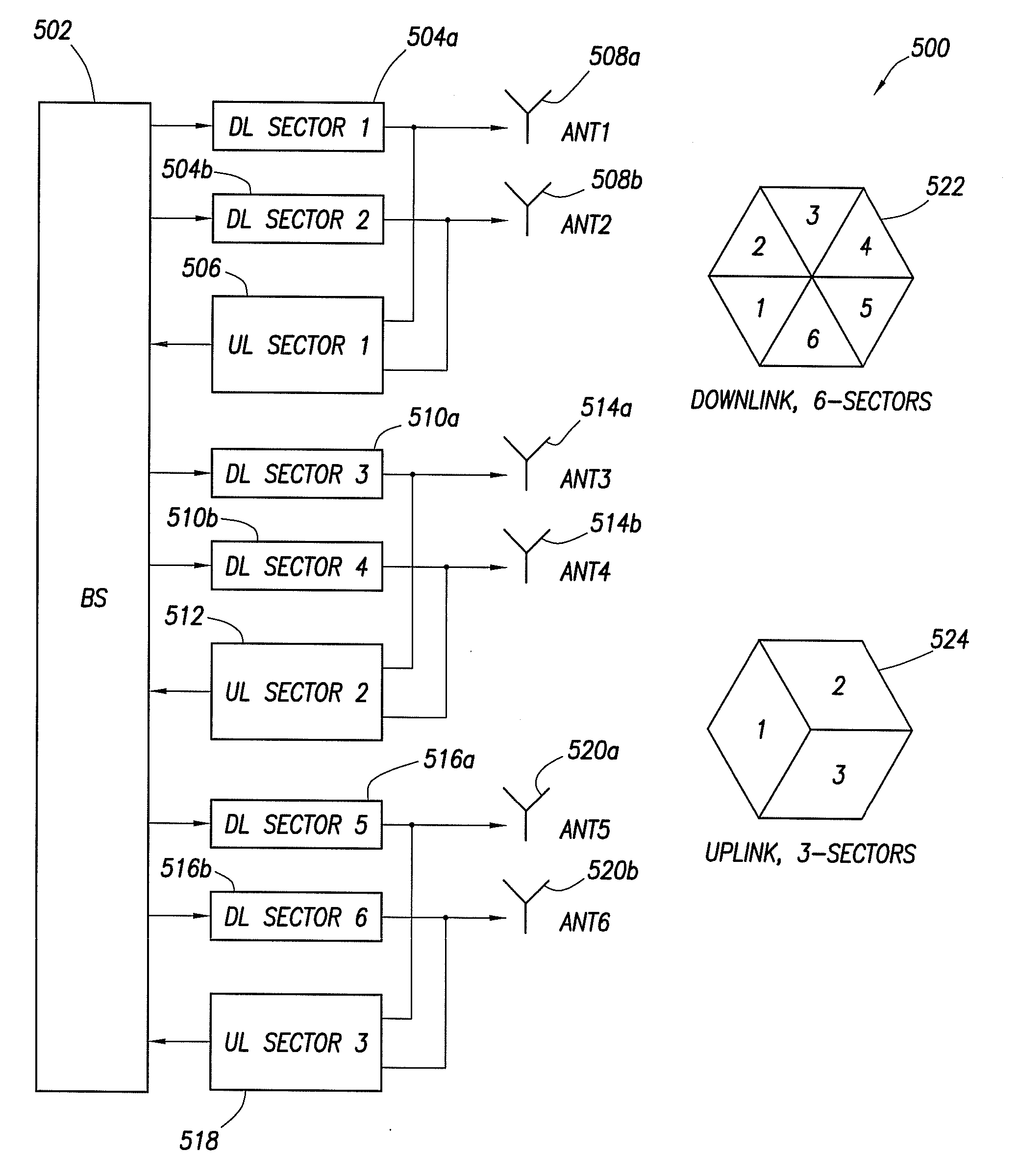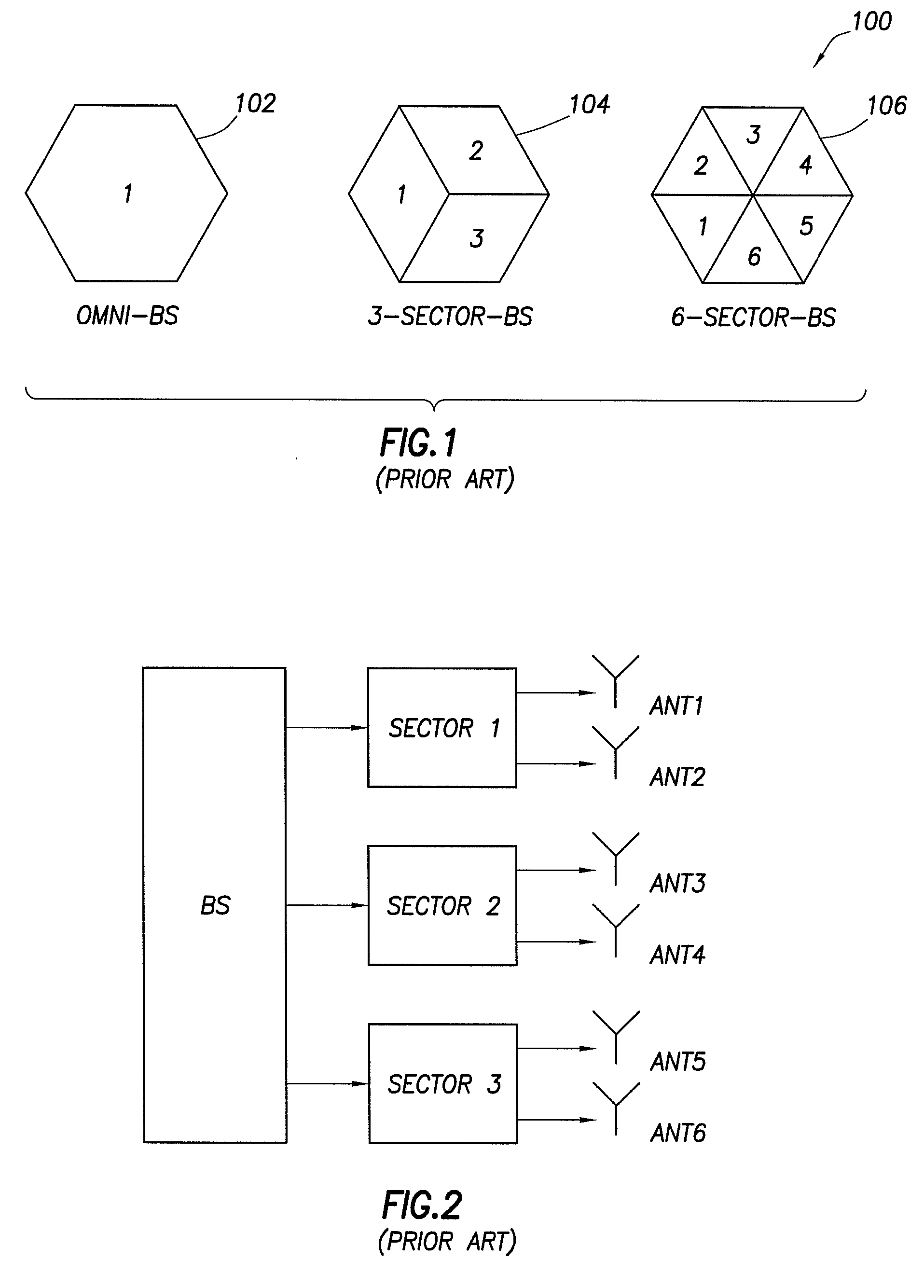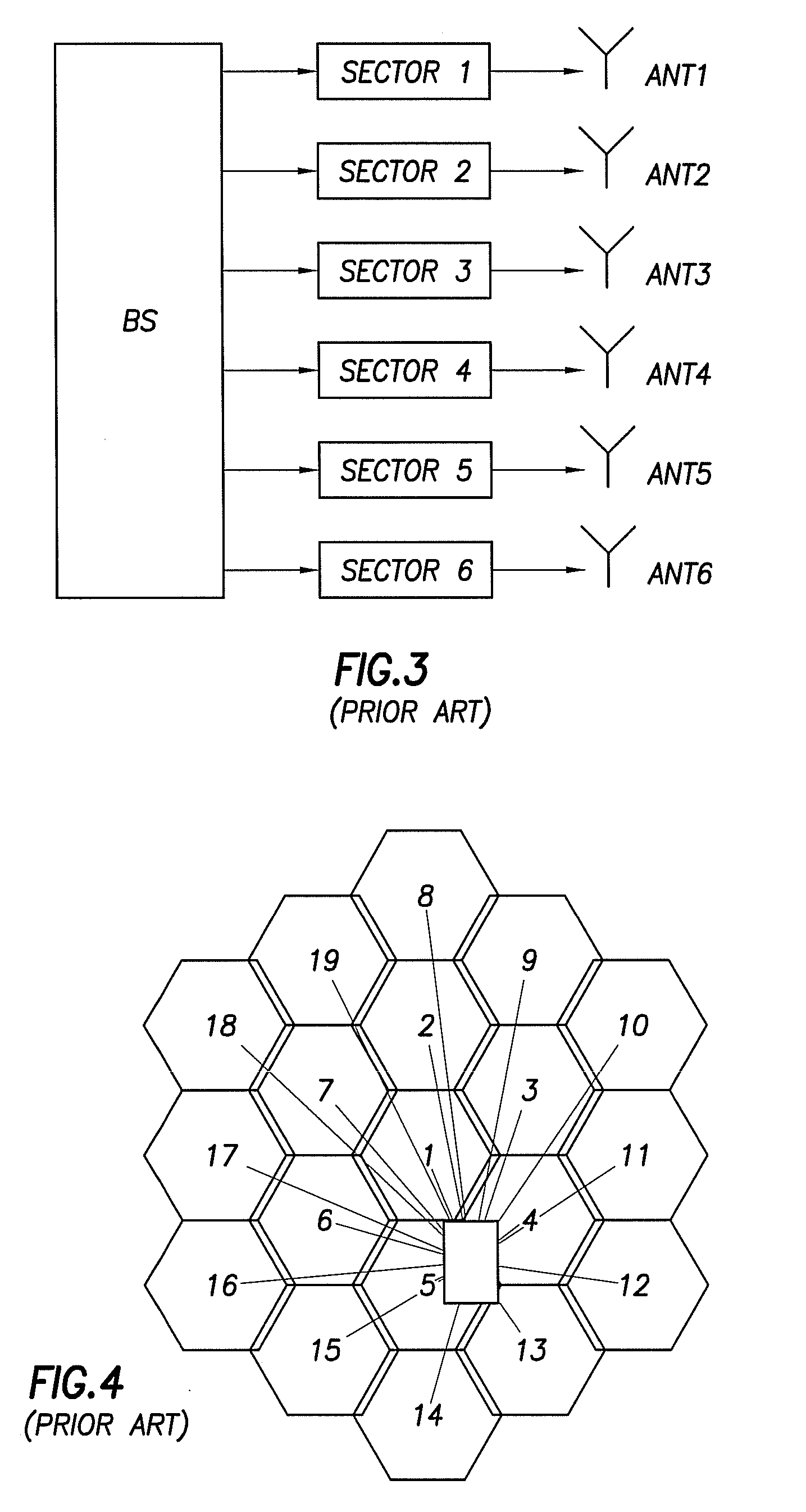Flexible sectorization in wireless communication systems
a wireless communication system and flexible technology, applied in the field of flexible radio coverage sectorization in wireless communication systems, can solve the problems of increasing complexity and cost of the base station involved, the link-budget issue between uplink and downlink has to be resolved, and the antenna per sector approach can seriously impact uplink coverag
- Summary
- Abstract
- Description
- Claims
- Application Information
AI Technical Summary
Problems solved by technology
Method used
Image
Examples
Embodiment Construction
[0022] Essentially, the present invention provides a system and method that enable the use of asymmetric radio coverage sectorization for both the downlink and uplink of a base station in a wireless communication system. In one example embodiment, a base station is configured to provide a 6-sector downlink and a 3-sector uplink. The downlink uses one transmit antenna per sector, and the uplink uses two receive antennas per sector. Consequently, the advantages associated with increased system capacity can be realized with the downlink configuration, and the advantages associated with 2-way receive diversity can be realized with the uplink configuration. Also, with such an asymmetric link configuration, the performance, range and coverage of the uplink remain unaffected, while the benefit of increased capacity due to higher sectorization can be realized on the downlink.
[0023] As such, FIG. 5 depicts a system 500 for flexible sectorization in a wireless communication system, which can...
PUM
 Login to View More
Login to View More Abstract
Description
Claims
Application Information
 Login to View More
Login to View More - R&D
- Intellectual Property
- Life Sciences
- Materials
- Tech Scout
- Unparalleled Data Quality
- Higher Quality Content
- 60% Fewer Hallucinations
Browse by: Latest US Patents, China's latest patents, Technical Efficacy Thesaurus, Application Domain, Technology Topic, Popular Technical Reports.
© 2025 PatSnap. All rights reserved.Legal|Privacy policy|Modern Slavery Act Transparency Statement|Sitemap|About US| Contact US: help@patsnap.com



